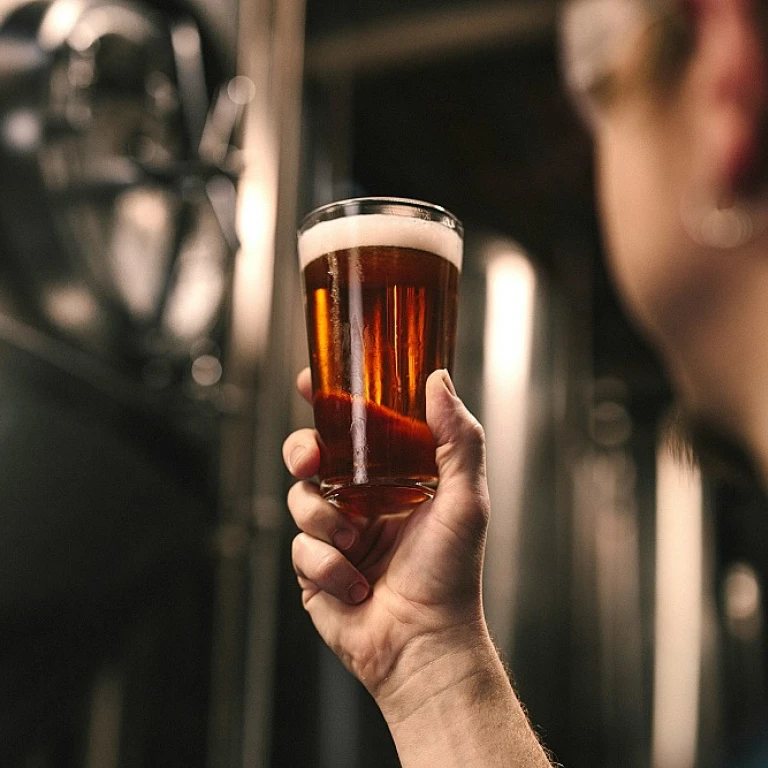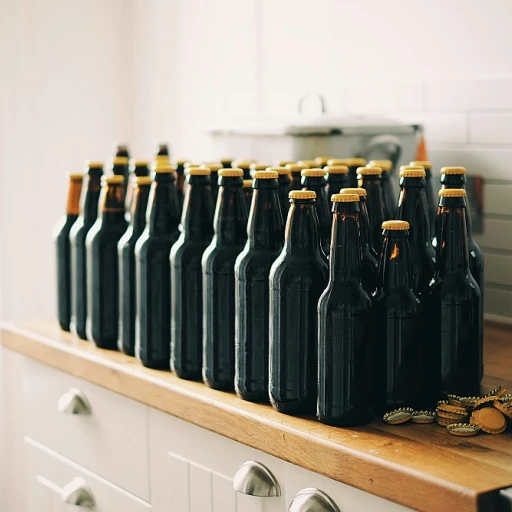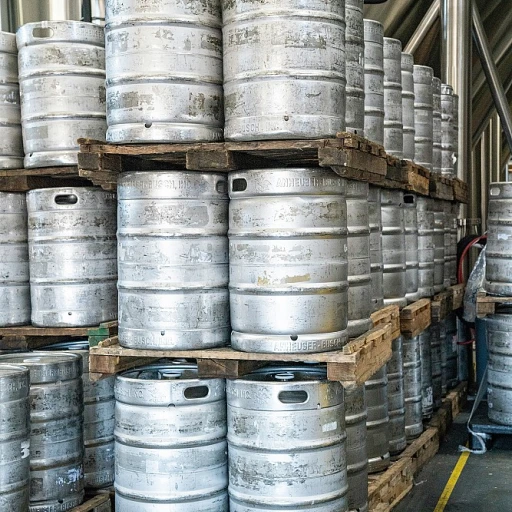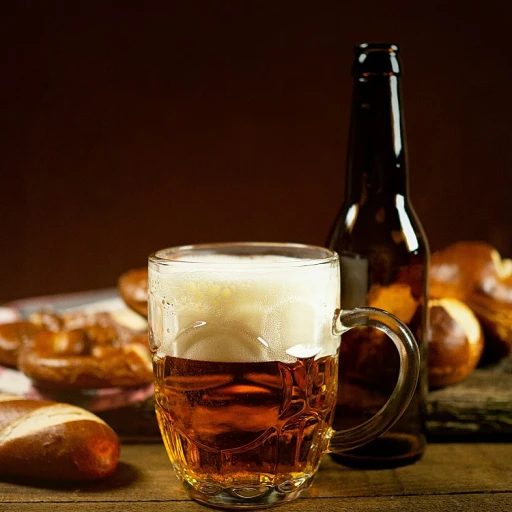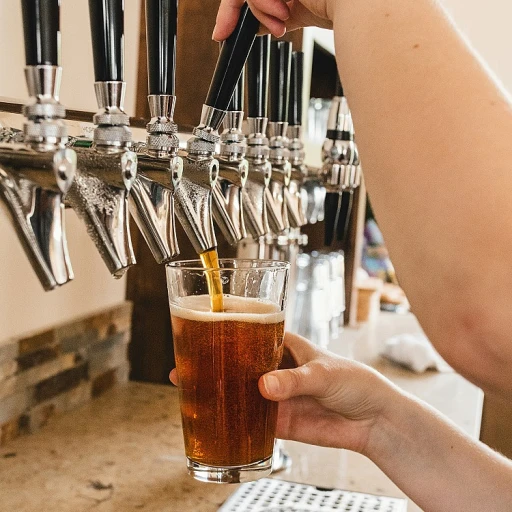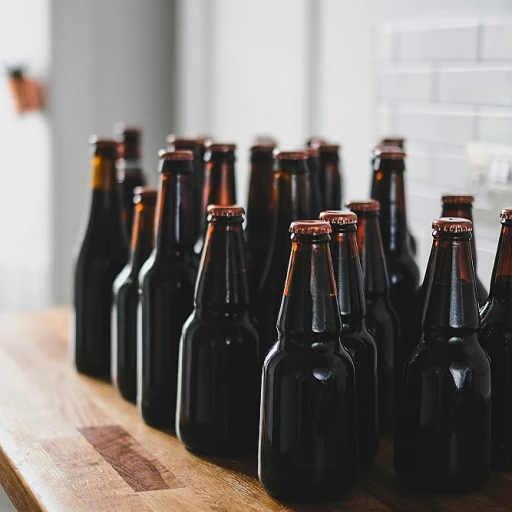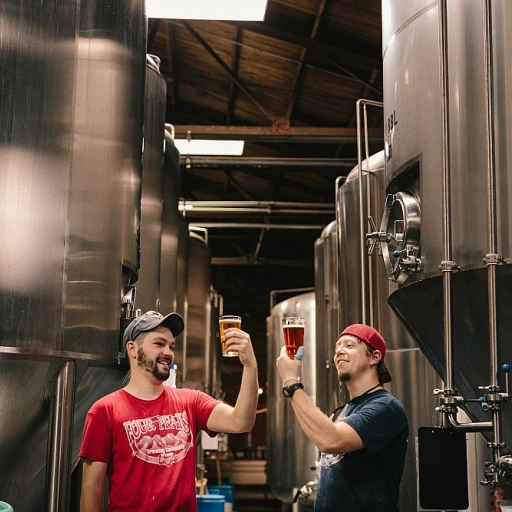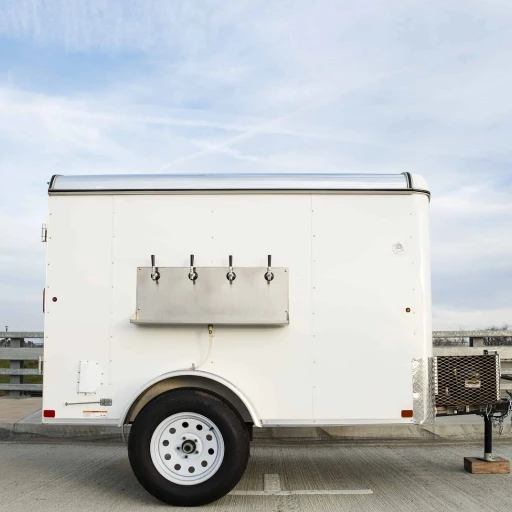
The Basics of Beer and Ale
Understanding the Foundations
When diving into the world of beer, it's essential to grasp the foundational differences between beer and ale. At its core, beer is a broad category that encompasses a variety of styles, including ale. This means that all ales are beers, but not all beers are ales. The distinction primarily lies in the yeast and fermentation process used.
Beer is generally divided into two main categories: ales and lagers. Ales are brewed using top-fermenting yeast, which works at warmer temperatures and tends to ferment more quickly. This process often results in beers with a more robust and complex flavor profile. On the other hand, lagers are brewed with bottom-fermenting yeast at cooler temperatures, leading to a crisper and cleaner taste.
If you're curious about how these differences manifest in various beer styles, exploring unique craft beer twists can provide further insight into the diverse world of ales and lagers.
Brewing Process: Ale vs. Lager
Understanding the Brewing Process
The brewing process is a fascinating journey that transforms simple ingredients into the diverse world of beers and ales. While both beer and ale share common elements like water, malted barley, hops, and yeast, the key difference lies in the type of yeast and fermentation process used.
Ale Fermentation
Ales are known for their warm fermentation process. This involves using top-fermenting yeast, which works at warmer temperatures, typically between 60-75°F (15-24°C). This yeast rises to the surface during fermentation, giving ales their distinctive fruity and complex flavors. The warmer fermentation allows for a quicker brewing process, often taking just a few weeks.
Lager Fermentation
In contrast, lagers undergo a cold fermentation process using bottom-fermenting yeast. This yeast works at cooler temperatures, usually between 45-55°F (7-13°C), and settles at the bottom of the fermentation vessel. This method results in a crisper, cleaner taste and requires a longer maturation period, often several months.
The choice between ale and lager fermentation not only affects the brewing timeline but also influences the flavor profiles, as you'll explore further. If you're curious about unique flavor experiences, you might find the root beer float strain an interesting read.
Flavor Profiles and Styles
Exploring the Taste Spectrum: Ales and Lagers
When it comes to flavor profiles, ales and lagers offer distinct experiences that cater to a variety of palates. Ales, often characterized by their robust and complex flavors, tend to have a fruitier and more aromatic profile. This is largely due to the warmer fermentation process, which allows for the development of esters and phenols, contributing to the rich taste.
On the other hand, lagers are known for their clean, crisp, and refreshing taste. The cooler fermentation process in lagers suppresses the formation of esters, resulting in a more subdued flavor profile. This makes lagers an excellent choice for those who prefer a lighter and more straightforward beer experience.
Diverse Styles to Satisfy Every Taste
Ales encompass a wide range of styles, from the dark and malty stouts and porters to the hoppy and bitter IPAs. Each style offers a unique taste journey, with varying levels of bitterness, sweetness, and alcohol content. Whether you're a fan of the bold and bitter or the smooth and sweet, there's an ale for you.
Lagers also offer a diverse selection, including the popular pilsners, which are known for their light body and subtle hop character. Other lager styles, such as bocks and Märzens, provide a richer and maltier taste, appealing to those who enjoy a more robust beer.
Alcohol Content and Beer Styles
Understanding Alcohol Levels in Beer Varieties
When exploring the world of beer, one key aspect to consider is the alcohol content, which can vary significantly between different types of beer and ale. This difference in alcohol levels is often influenced by the brewing process and the ingredients used, as discussed earlier.
Ales, known for their warm fermentation process, typically have a higher alcohol content compared to lagers. This is because the yeast used in ales thrives at higher temperatures, resulting in a faster fermentation process and often a stronger beer. Ales can range from around 4% to over 12% alcohol by volume (ABV), depending on the style.
On the other hand, lagers are usually fermented at cooler temperatures, leading to a slower fermentation process. This often results in a lower ABV, typically ranging from 3% to 5%. However, there are exceptions, such as doppelbocks, which can have a higher alcohol content.
When selecting a beer, consider how the alcohol content might influence your experience. A higher ABV beer might offer a more robust flavor and a warming sensation, while a lower ABV option could be more refreshing and sessionable, ideal for casual sipping.
Choosing Your Beer: Personal Experiences
Finding Your Perfect Brew
Choosing the right beer is a personal journey, much like selecting a favorite book or movie. It involves exploring different styles, flavors, and even brewing processes. With the knowledge of how ales and lagers differ, you can make more informed decisions about what might suit your palate best.
Consider the following tips when selecting your next beer:
- Reflect on Flavor Preferences: Do you enjoy fruity, spicy, or malty flavors? Ales often offer a broader range of these taste profiles, while lagers are known for their crisp and clean finish.
- Think About the Occasion: Are you looking for a refreshing drink on a hot day or something more robust to savor slowly? Lagers can be a great choice for light, refreshing moments, whereas ales can provide a deeper, more complex experience.
- Experiment with Different Styles: Try different beer styles to expand your palate. You might find that you enjoy a stout ale or a pilsner lager, each offering unique characteristics.
- Consider Alcohol Content: If you prefer a lighter drink, lagers might be more suitable. However, if you're in the mood for something with a bit more kick, ales often have a higher alcohol content.
Ultimately, the best way to find your favorite beer is to taste and enjoy the diversity that the beer world has to offer. Whether you lean towards ales or lagers, there's a perfect beer out there waiting for you to discover.

